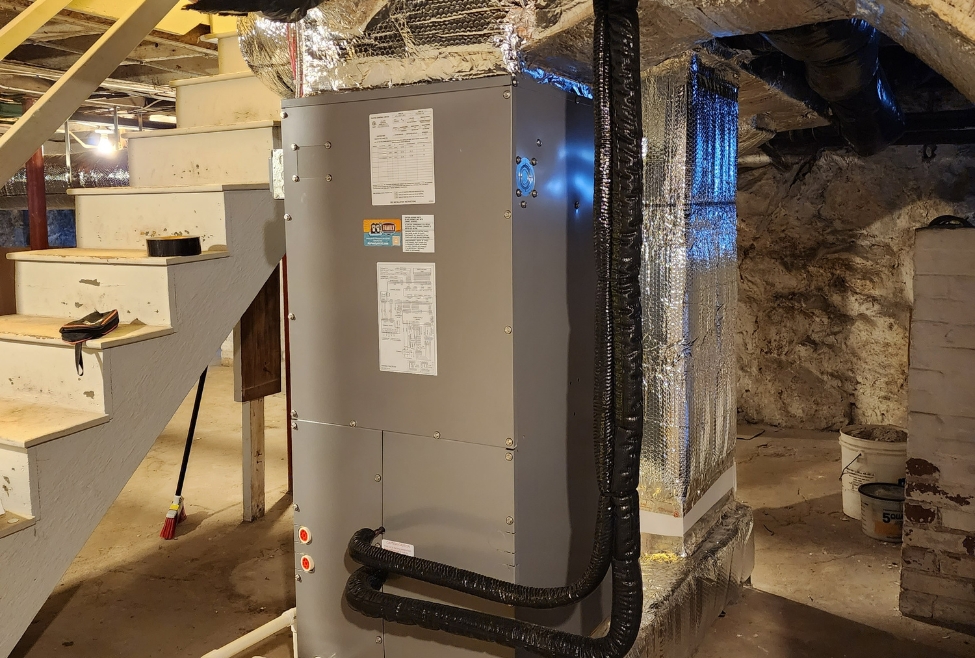
A Step-by-Step Guide
An oil furnace is a reliable heating system, but if it runs out of fuel, you may need to prime it to get it working again. Knowing how to prime an oil furnace properly can prevent damage and ensure your home stays warm. In this guide, Family Heating and Cooling explains how to safely bleed and restart an oil furnace, common troubleshooting tips, and when to call a professional.
Why Does an Oil Furnace Need to Be Primed?
If your oil furnace runs out of fuel, air can get trapped in the fuel lines, preventing the burner from igniting. Priming, or bleeding, the furnace removes this air and allows oil to flow properly. Regular maintenance, including filter changes and burner inspections, can help prevent these issues.
How to Prime an Oil Furnace
If your furnace won’t start after running out of oil, follow these steps:
1. Check the Oil Supply
Before priming, ensure your fuel tank has enough oil. If the tank is empty, refill it and let the oil settle for a few minutes to avoid pulling sludge into the lines.
2. Turn Off the Furnace
Locate the power switch on your oil furnace and turn it off. This step is crucial to avoid potential damage or safety hazards.
3. Find the Bleed Valve
The bleed valve is usually located near the oil pump. You may need an adjustable wrench to open it. Have a container ready to catch excess oil.
4. Loosen the Bleed Valve
Slightly loosen the valve and press the reset button on the furnace. This will start the pump and force air out of the lines.
5. Wait for a Steady Flow of Oil
Watch for a steady stream of oil (without air bubbles) coming from the valve. Once this happens, tighten the valve to stop the flow.
6. Restart the Furnace
Turn the power back on and listen for the burner to ignite. If the furnace doesn’t start, you may need to repeat the process or check for clogged filters or fuel line blockages.
Common Issues When Priming an Oil Furnace
If your furnace still won’t start, consider these troubleshooting steps:
- Clogged Oil Filter: A dirty oil filter can prevent proper fuel flow. Replacing the filter can improve performance.
- Air in the Lines: If you hear gurgling sounds, there may still be air in the fuel line. Try bleeding the system again.
- Faulty Ignition System: If the burner won’t ignite, the ignitor or flame sensor may need cleaning or replacement.
- Low Fuel Quality: Sludge buildup in the tank can clog the lines. Regular oil furnace maintenance can prevent this issue.
When to Call a Professional
While priming an oil furnace is a simple task, persistent issues may require expert attention. At Family Heating and Cooling, we provide oil furnace repair, maintenance, and installation services in:
If your furnace won’t restart, leaks oil, or produces smoke, schedule a professional inspection. Our team can diagnose the issue and restore your system to peak efficiency.
Keep Your Oil Furnace Running Smoothly
Regular furnace maintenance helps prevent issues like air in fuel lines, clogged filters, and ignition failures. Whether you need a routine tune-up or emergency repair, Family Heating and Cooling is here to help.
Get Professional Furnace Service Today!
If your oil furnace isn’t working properly, don’t wait for the cold to set in. Contact Family Heating and Cooling today for expert oil furnace repair and maintenance services.
FAQs
Can I prime my own oil tank?
Yes, but it requires caution. If your oil furnace runs out of fuel, air can get trapped in the lines, preventing ignition. Priming involves opening the bleeder valve near the oil pump to release air. If not done correctly, it can cause airlocks or system issues. If you’re unsure, it’s best to have a professional handle it.
How do you purge the air from an oil furnace?
Purging air involves opening the bleeder valve while the system runs to let trapped air escape. This helps prevent ignition failure and fuel flow issues. You’ll need a wrench and a small container to catch excess oil. If air keeps getting into the lines, there may be a leak or another underlying issue.
Do you have to bleed a furnace if you run out of oil?
Yes, running out of oil allows air into the fuel lines, which prevents the furnace from starting. Bleeding the system removes this air so fuel can flow properly again. If the furnace still doesn’t start after bleeding, there may be a clogged filter or another issue to check.
How to tell if an oil valve is open or closed?
Look at the fuel shutoff valve near the tank or burner. If the handle is parallel to the fuel line, it’s open. If it’s perpendicular, it’s closed. A closed valve will block oil flow, which can prevent the furnace from running properly.
How to prime an oil boiler without priming the pump?
Some modern oil boilers have an automatic air bleed valve that removes trapped air on its own. If your system doesn’t have this feature, adding fuel and waiting a few minutes might allow the air to clear naturally. If the boiler still won’t start, manual priming may be necessary.






